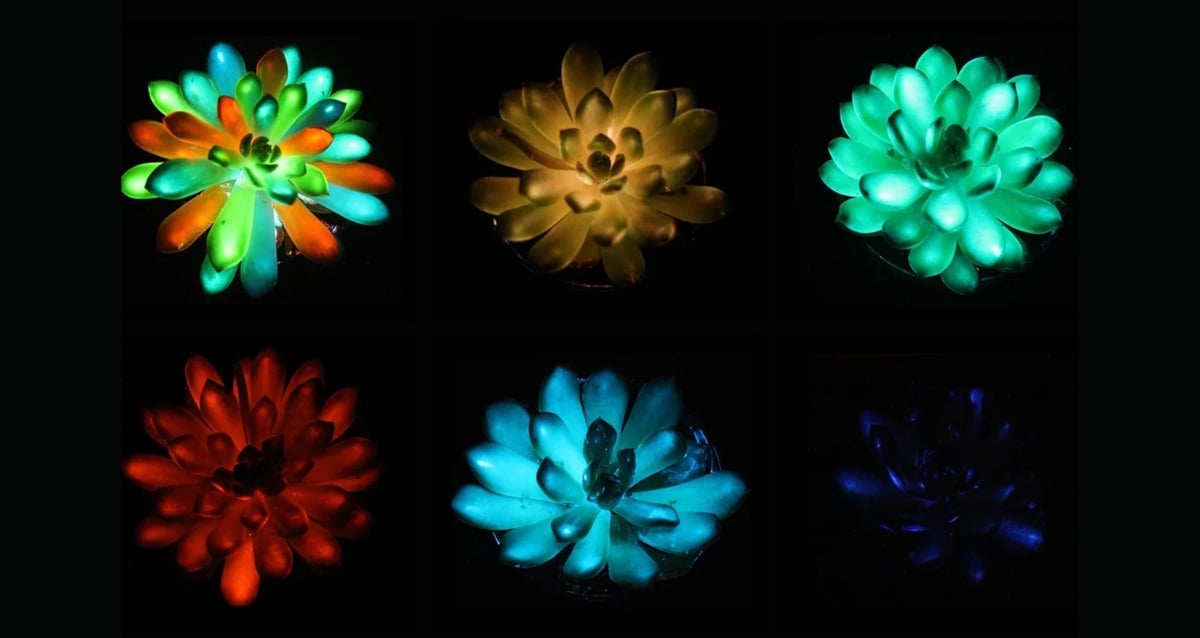Chinese Scientists Unveil Living Glow-In-The-Dark Plants That Change Colors—A Botanical Breakthrough or Science Fiction?
Have you ever wondered what it’d be like if your beloved succulents threw a neon party right in your living room? Well, brace yourself—researchers at South China Agricultural University just made that wild idea glow into reality. By injecting these hardy little plants with phosphor particles—tiny light emitters charged up by sunlight or good ol’ LED bulbs—they’ve turned your average Echeveria into a botanical light show that lasts up to two hours. Imagine a world where plants aren’t just low-maintenance decor but also your nightlamp’s hip, glowing cousins. It’s like Avatar meets your granny’s garden… but with way more pizzazz and about 10 minutes of injection time. The question is: could these glowing greens soon replace streetlights, or are we just sprouting a new kind of garden novelty? Trust me, this is one story that’s as bright as it is intriguing. LEARN MORE.
By injecting phosphor particles into succulents and exposing the leaves to sunlight or LED light, the researchers made the plants glow for up to two hours.

Liu et al./MatterInjection of the succulents only took about 10 minutes.
Researchers at South China Agricultural University have bioengineered succulents that glow in vibrant colors by injecting them with light-emitting phosphor particles and exposing the plants to sunlight or LED light.
The team, led by Xuejie Zhang, infused Echeveria “Mebina” succulents — a common houseplant — with micron-sized phosphor particles. These particles, synthetic materials made of strontium and aluminum dosed with other metals, are designed to emit light in different colors. Because of this, experts were able to create a breathtaking display of plants glowing not only in a brilliant green shade, but also blue, red, and blue-violet.
As documented in their report, published in the journal Matter, the glow lasted up to two hours, with their brightest light comparable to that of a small night lamp. Notably, this process could be repeated daily with a “recharge” from sunlight or LED light, with the luminescence returning again and again over the course of the 10-day period of the study.
How The Phosphor Particles Made The Succulents Glow

Liu et al./MatterA breakdown of how the phosphor particles changed the leaves’ appearance over the course of the injection period.
“Picture the world of Avatar, where glowing plants light up an entire ecosystem,” study author Shuting Liu said in a press release. “We wanted to make that vision possible using materials we already work with in the lab. Imagine glowing trees replacing streetlights.”
Previous attempts at glowing plants — especially genetic engineering approaches, such as inserting genes from fireflies or luminous mushrooms into tobacco plants or petunias — produced only a faint, limited green light.
This new method, however, uses synthetic phosphor particles about six to eight micrometers wide, about the size of a human red blood cell. They’re small enough to travel through plant tissue, yet large enough to produce a strong glow.
The succulents’ internal structure facilitated even distribution of these particles, unlike other species, such as bok choy or golden pothos, which displayed a patchy glow or no glow at all.
“It was really unexpected,” Liu said, saying that she first believed plants with airy tissue structures would be better suited for the experiment. “The particles diffused in just seconds, and the entire succulent leaf glowed.”
Potential Uses For These Colorful, Luminescent Succulents
According to the researchers, the injection of the plants takes about 10 minutes. Once charged — meaning exposed to sunlight or LED light for a few minutes — the plants can glow for up to two hours.
Recharging simply involves repeating the exposure.
The material cost per plant is also low — roughly 10 Chinese yuan, or about $1.40 in American dollars, not including labor. The team has applied for a patent on the technique, and they envision decorative or practical lighting applications using living plant installations. They believe this could be a low-cost and sustainable alternative to low-intensity lighting in areas like pathways or gardens, or perhaps even interior decor.

Liu et al./MatterThe luminescent succulents can glow with a variety of colors.
They even created a “plant wall” of 56 glowing succulents, producing enough light to read a book near the wall at nighttime.
“I just find it incredible that an entirely human-made, micro-scale material can come together so seamlessly with the natural structure of a plant,” Liu said. “The way they integrate is almost magical.”
Caveats And Other Expert Perspectives
While Shuting Liu and her fellow researchers are optimistic about the future possibilities of this innovation, other experts are less confident and raised some important questions.
Speaking with Nature, Keith Wood of the U.S.-based biotechnology firm Light Bio highlighted two main concerns: plant health and safety.
The long-term effects of particle infusion on plant viability are unknown. Injecting leaves with foreign particles could potentially affect their health. Additionally, toxicity risks would need to be evaluated in case the leaves containing the particles were accidentally ingested.

















